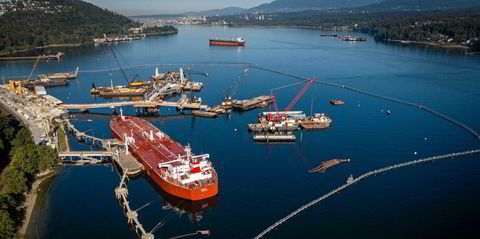The International Maritime Organisation’s 2020 limits on sulphur content in ship fuel have been a big positive in lowering vessel emissions.
But scientists and brokers are now arguing that the rules have had an unintended consequence of actually warming the global ocean surface temperature — and that could provide an opportunity to develop solar geo-engineering.
It’s all to do with ship tracks, the lines of clouds formed behind ships by water molecules collecting around the tiny particles from exhausts.
The particles induce a brightening effect due to water vapour condensation.
Nasa found that the bright clouds reflect sunlight back up into the atmosphere and have had a cooling effect.
With these tracks lessening, however, the increase in light due to the IMO regulations has warmed the planet by 0.1 watts per square metre, according to the Science journal.
UK shipbroker Alibra Shipping said global emissions of sulphur dioxide (SO2) from shipping have fallen by around 10% since 2020.
“But could this actually be contributing to global warning, the opposite to the intended outcome?” it asked.
The brokerage suggested that the reflective effect could now be recreated with solar geo-engineering.
The stuff of science fiction?
The process is called marine cloud brightening.
Michael Diamond, an atmospheric scientist at Florida State University, told Science that the effect of the decline in vessel tracks “suggests pretty strongly that if you wanted to do it on purpose, you could”.
Alibra explained: “Although it sounds like the stuff of science fiction, the sulphur particles would be artificially introduced into the atmosphere using planes for stratospheric dispersal at altitude of 20 km, which is far higher than a commercial jet usually flies.”
But no planes are currently capable of doing this, the London shop said.
And it has been estimated that dispersal of 3m tonnes of sulphates per year would be required for a 0.3C reduction in global temperature.
“So should the IMO backtrack on its low-sulphur ruling? It seems like the easier option rather than resorting to solar geo-engineering for solar radiation management,” Alibra concluded.





